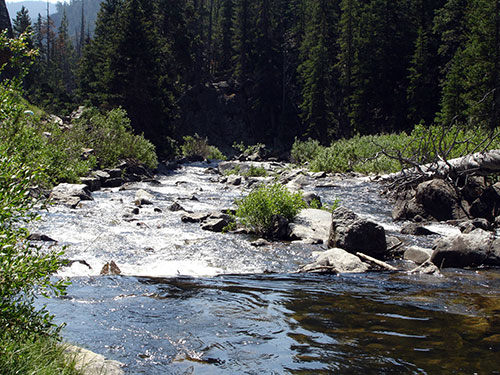Announcement posted by John Morris Group 04 Jun 2015
As part of the tools for developing and implementing watershed plans and total maximum daily loads (TMDLs) there is also a need to look into nonload parameters.
These parameters are difficult or impossible to express in terms of load. They 're often measured directly in the field with a variety of single- (ProODO, Pro20, ODO200) dual– (Pro2030) or multiparameter (Pro Plus, ProDSS) instruments. These instruments can either be used as convenient handheld spot sampling scenarios or long-term unattended continuous monitoring.
Dissolved Oxygen in Watersheds
Fish, invertebrates and most aquatic organisms need oxygen for their metabolism. They obtain this oxygen from dissolved oxygen (DO) gas held in the water. When these DO levels become too low, organisms are weakened and eventually die. The young of any species are especially susceptible because of their high metabolism and limited mobility, which doesn’t allow them to effectively seek higher-oxygen waters.
Therefore, DO is one of the most critical parameters that reflects the health of the aquatic ecosystem. Dissolved oxygen measurements provide a direct indication of the ability of the water to support aquatic life other than plants. Indicator species can also provide clues on the DO levels, as DO demands differ among species.
The maximum amount of oxygen (saturation concentration) that can be dissolved in water decreases with increasing temperature. For example, air-saturated water at 15°C contains 10.1 mg/L DO; at 25°C, the water would be air-saturated at approximately 8.3 mg/L DO. It’s important to note that water can receive substantially more DO when the gas source is pure oxygen, as from photosynthesis, instead or air, which is only ~21% oxygen.
Note: An additional resource of interest may be the DO-Oxygen-Solubility-Table that shows the correlation between dissolved oxygen and temperature.
Oxygen enters water from photosynthesis by algae and other submerged aquatic plants, and from the atmosphere. Oxygen exchange between the stream and the atmosphere often occurs most effectively where cascades, riffles or fast-moving water exist.
Oxygen is consumed by larger organisms; microbes breaking down organic matter from sediments, manure, dead algae or other plant materials; microbes oxidizing ammonia to nitrate; and chemicals that spontaneously oxidize. Living algae consume DO at night when they are not photosynthesizing.
Even short periods of low DO can kill organisms, so continuous monitoring is especially important for this parameter. Dissolved oxygen must be determined in the field, as sample handling can rapidly change concentrations. Oxygen electrodes are extremely stable and, with some minimal maintenance, can easily provide continuous monitoring of DO (and other parameters) in water.
Although wet chemistry titration methods are still used to measure DO, continuous monitoring methods are preferred in the majority of applications. Data can also be remotely acquired and real-time data visible at any time.
Read complete article on YSI Waterblogged
Need more information on YSI instruments?
Our Technical Experts want to hear from you
AUS Freecall Ph. 1800 552 724 and NZ Freecall Ph. 0800 651 700
Email: environmental@johnmorris.com.au
Media Contacts
Industrial Division Manager


